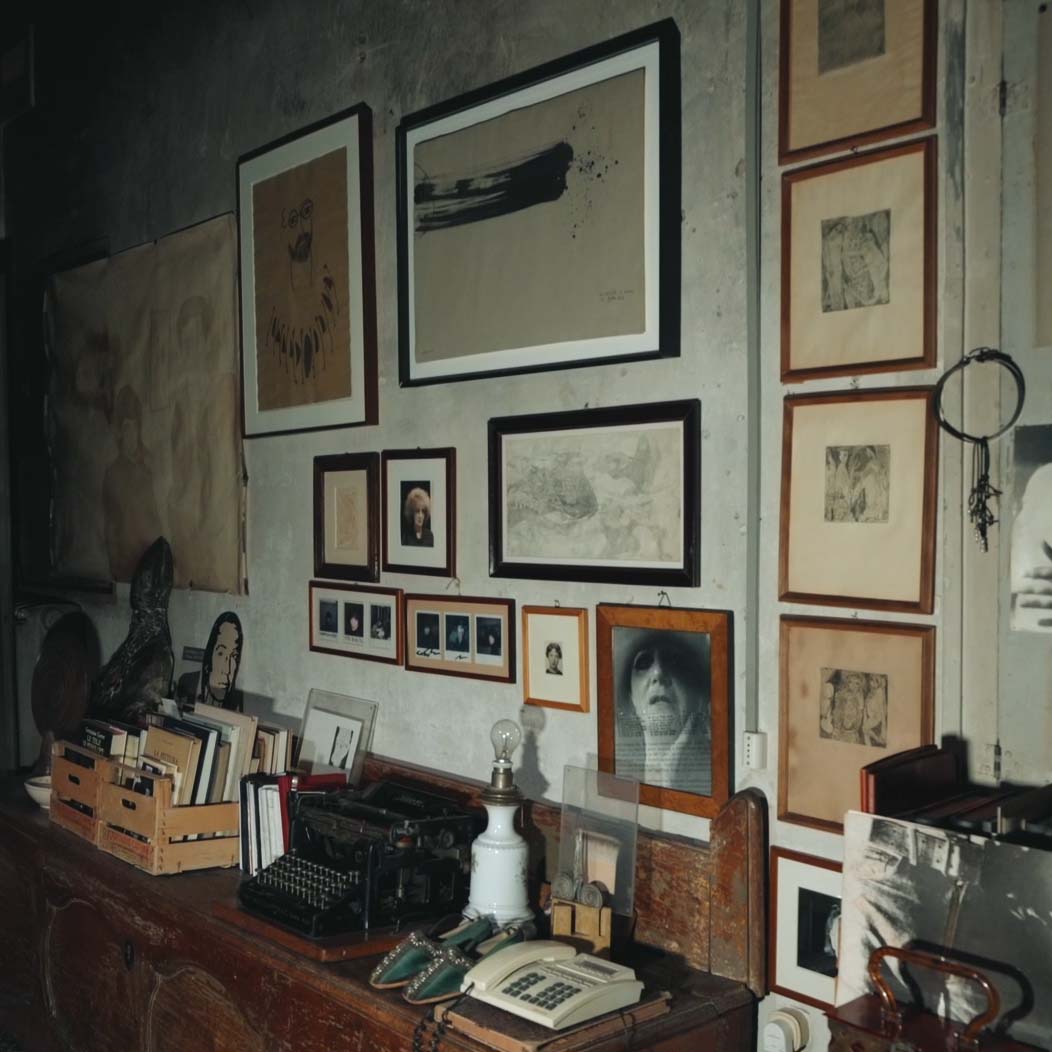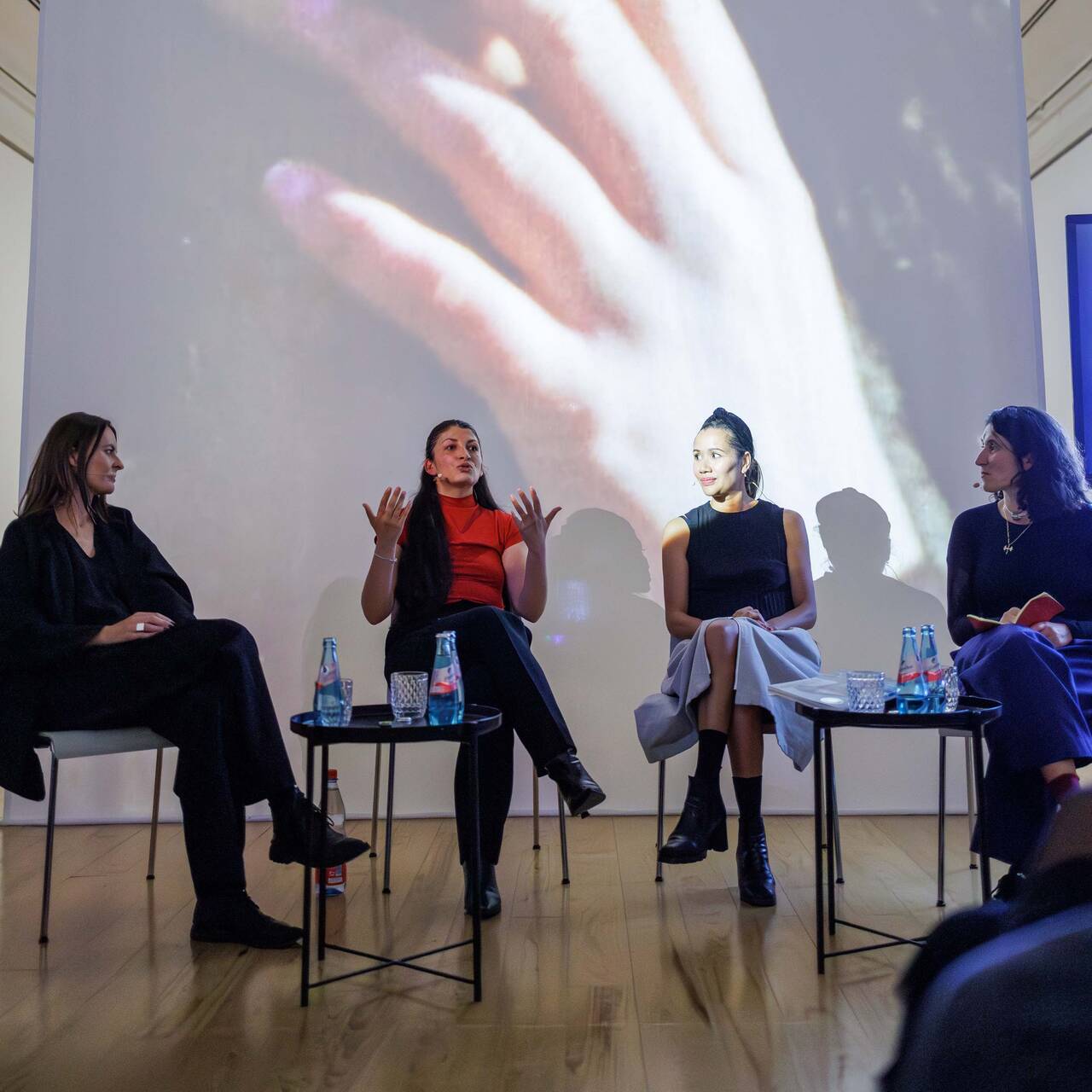Richard Gerstl enjoyed no success with his paintings during his lifetime, and his unusual way of painting was dismissed as repulsive and ugly. Yet even ugliness possesses a certain aesthetic appeal.
It is a general phenomenon in our nature that the melancholy, the terrible and the horrible attract us with irresistible charms, and that we feel ourselves with equal powers repulsed from, and again attracted to, scenes of woe and of terror [...].
It is no wonder, therefore, that the works of Richard Gerstl hold a fascination that is hard for the observer to resist. Indeed, we know that in 1908 the artist was found in his studio: hung, and with a knife in his chest – a truly awful death, which is not entirely devoid of a certain apparently staged aesthetic.
Ugliness is in the eye of the beholder – is it not?
The aesthetic of the ugly – a theme that has fascinated and inspired artists time and again for centuries as a radical contrast to everything beautiful. Yet while beauty has regularly been defined by artists and philosophers (in thoroughly different ways, depending on the era and cultural circles), in order to explain the concept of ugliness one has to resort to representations and descriptions in art and literature.

Friedrich Schiller, Embedded Image via wikipedia.org
What appears ugly to us is highly subjective and yet, at the same time, there is a collective consensus: A disproportionate or deformed build, a cockeyed look, grimaces, decay and death have throughout the ages – at least in European cultural circles – been described in words such as repulsive, objectionable, hideous and disgusting, writes Umberto Eco in “On Ugliness”.
Our trained eye
Bringing together Richard Gerstl and the concept of ugliness may at first glance appear controversial – yet here we must remember that our eyes have been trained by the various artistic styles of the 20th century, such as Expressionism, Futurism or Surrealism, in a different way to the eyes of those who lived at the end of the 19th century.

Umberto Eco, Embedded Image via commons.wikimedia.org
At the time of the Vienna Secession, which took up the cause of artistic “aestheticization” of all areas of life, Gerstl and his thick, brashly executed brushstrokes inevitably went against the accepted grain. He was a member of the Vienna Academy of Art, but he was unable to warm to the theories of such artists as Gustav Klimt, who had trained there and whose style of painting was much praised in Vienna, nor did he like Klimt’s allegorical presentation of women, wanting instead to paint differently.
He was predominantly inspired by portraiture, and most significantly by self-portraits, with which he aimed to find an entirely new means of artistic expression. Well-read as he was, it’s likely that Gerstl was familiar with the text “Aesthetics of Ugliness”, which Karl Rosenkranz penned in 1853. In it, he differentiated between various types of ugliness and also examined what he termed the “aesthetically ugly”:

If it is the task of art to create what is beautiful, must it not seem like the greatest contradiction if we see that art also produces what is ugly? If we were to answer this by saying that art nevertheless creates what is ugly but in the form of something beautiful, then we would obviously only add a second, and apparently greater, contradiction to the first [...].
The ugly must not be missing from art, since the latter must aspire to show all aspects of life, he goes on to say, yet it can never be the sole object: One must always portray something beautiful alongside it. A hypothesis that Gerstl, for all that he was aware of it, contradicted in his works. In particular, in his self-portraits the artist shows himself and his body with unsparing openness, with squinting eyes, hanging shoulders and an apparently direct insight into his inner life.
An inner asymmetry
Here he even exaggerated his own proportions, painting his arms and neck as unnaturally long, and thus expressed his inner “asymmetry” and strife. What today appears to be a penetrating self-portrait was, at the time, nothing short of a small scandal: nobody in Austria painted that way, and it was only years later that Oskar Kokoschka and Egon Schiele found a similar means of expression.

Here Richard Gerstl essentially locked into a theme that was particularly popular in the literature of the time: The representation of the downsides of civilization, the ugly grimaces and chasms of humankind, the drives, fantasies and dreams, a topic much discussed in the wake of Sigmund Freud’s “The Interpretation of Dreams” published in 1900. This was a text that Gerstl is known to have read and which led to the stylistically radical representation of people in his images; his self-portraits also sometimes appear as if Gerstl had a veritable battle with the paintbrush and spat out his very core onto the canvas in despair and rage. Despite all their eruptive power, these images have an aesthetic of ugliness that is quite unique, as well as a fascination that, it is hard for viewers today to tear themselves away from.

Sigmund Freud, Embedded Image via commons.wikimedia.org

ABOUT TIME. With Marie-Theres Deutsch
Marie-Theres Deutsch was born in 1955 in Trier at the central western tip of Germany, into a family of five women and a father who was an architect....

These boots are made for walking
Shoes are silent storytellers, revealing secrets about their wearer's personality, status and desires. No wonder, then, that artists like Carol Rama...

Seeing nature anew – through a cube
In his early work, HANS HAACKE addressed the relationship between art and nature as well as the social interest in the reciprocal relationship between...

The film to the exhibition: Hans Haacke. Retrospective
A legend of institutional critique, an advocate of democracy, and an artist’s artist: The film accompanying the major retrospective at the SCHIRN...

A new look at the artist – “L’altra metà dell’avanguardia 1910–1940”
With “L’altra metà dell’avanguardia 1910–1940”, in 1980 Lea Vergine curated an exhibition at the Palazzo Reale in Milan that was one of the first...

Non-human living sculptures by Hans Haacke and Pierre Huyghe
In his early work, HANS HAACKE already integrated animals and plants as co-actors into his art. In that way he not only laid the foundations for a...

CURATOR TALK. CAROL RAMA
SCHIRN curator Martina Weinhart talks to Christina Mundici, director of the Carol Rama Archive in Turin, editor of the first Catalogue Raisonné and...

Freedom costs peanuts
HANS HAACKE responded immediately in 1990 to the fall of the Berlin Wall and turned a watchtower into art.

The film to the exhibition: CAROL RAMA. A REBEL OF MODERNITY
Radical, inventive, modern: The film accompanying the major retrospective at the SCHIRN provides insights into CAROL RAMA's work.

Now at the SCHIRN: Hans Haacke. Retrospective
A legend of institutional critique, an advocate of democracy, and an artist’s artist: the SCHIRN presents the groundbreaking work of the compelling...

Carol Rama’s Studio: A nucleus of creativity
CAROL RAMA determinedly forged her own path through the art world. Her spectacularly staged studio in Turin was opened to the public only a few years...

PANEL: POLITICAL ACTIVISM BY SELMA SELMAN
Hosted by Arnisa Zeqo, Amila Ramović and Zippora Elders speak with the artist Selma Selman about her artistic career, the exhibition SELMA SELMAN....